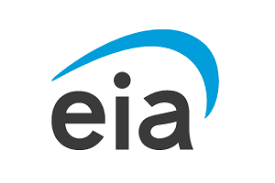· Brian Horton · Natural gas storage · 2 min read
US Natural Gas Prices Surge to 11-Week High Amid Bullish Storage Data and Record LNG Exports
US natural gas futures surged to an 11-week high at $3.54/MMBtu, fueled by a bullish EIA storage report showing a smaller-than-expected inventory build. With output easing slightly and LNG exports hitting record highs in September, tightening supply conditions are driving market momentum ahead of winter.

US natural gas futures extended their winning streak to five consecutive sessions, climbing 2% to $3.54 per MMBtu on Thursday. This rally pushed prices to their highest level in 11 weeks, driven largely by a bullish storage report from the U.S. Energy Information Administration (EIA) and continued strength in export demand.
For the week ending September 26, natural gas inventories increased by just 53 billion cubic feet (bcf), sharply below analyst expectations of a 67 bcf build and well under the five-year average of 85 bcf. Total working gas in storage now stands at 3.561 trillion cubic feet (tcf), which is 0.6% higher than levels from the same period last year and 5% above the five-year average. This smaller-than-expected build suggests a tightening supply-demand balance heading into the peak winter heating season, reinforcing upward momentum in the market.
Adding further support to prices is a slight dip in domestic production. Output from the Lower 48 states slipped to an average of 107.4 billion cubic feet per day (bcfd) in September, easing back from the all-time high of 108.3 bcfd recorded in August. While production remains historically strong, any sustained decline could contribute to tighter market conditions, especially as seasonal demand begins to rise.
On the export side, US liquefied natural gas (LNG) shipments hit a record high in September, reaching 9.4 million metric tons (MT). This surpassed the previous monthly record set in August and highlights the continued strength in global demand for American LNG. However, early October data shows a slight pullback in feedgas flows due to reduced intake at Venture Global’s Calcasieu Pass facility in Louisiana. While this temporary dip may soften near-term exports, overall fundamentals remain robust, particularly as European and Asian markets continue to seek stable gas supplies ahead of winter.
Weather-related risks appear to be easing. Hurricane Imelda, once a potential disruptor to Gulf Coast infrastructure, is now weakening and expected to transition into an extra-tropical low. With minimal impact on production and transportation networks, the storm is unlikely to introduce new volatility in the near term.
Altogether, a confluence of bullish factors—including lower-than-expected storage builds, record-setting LNG exports, and marginal production declines—has helped propel natural gas futures higher. As winter approaches, market participants will continue to monitor supply dynamics, weather patterns, and global demand signals closely. For now, the outlook leans supportive for prices, particularly if storage levels fail to keep pace with seasonal norms.
- natural gas prices
- EIA storage report
- LNG exports
- US energy market